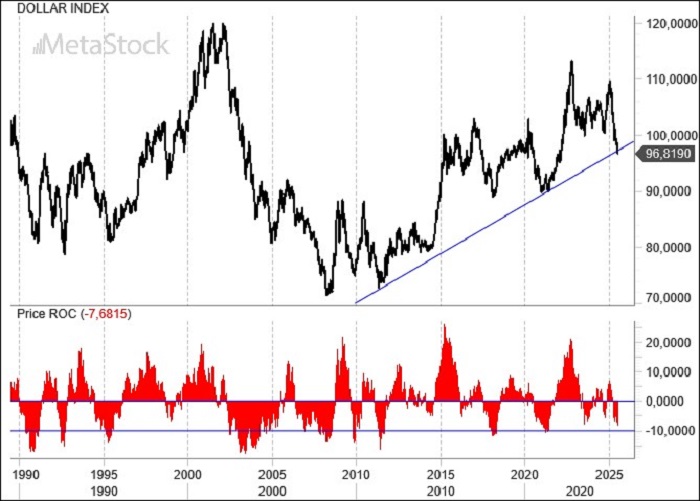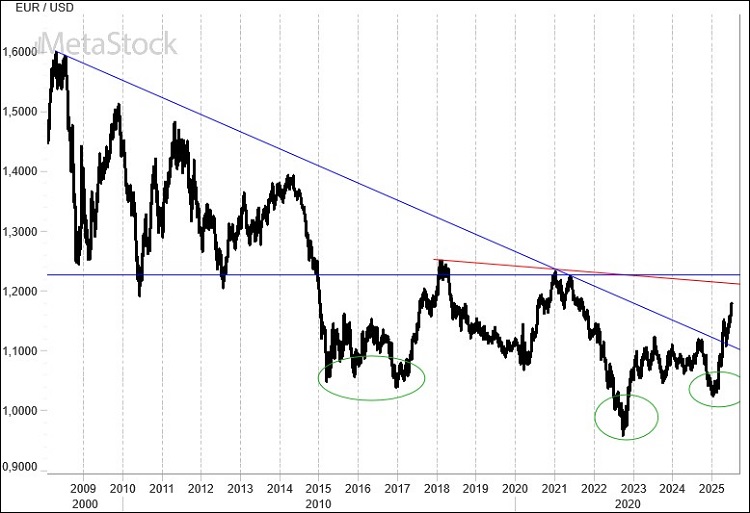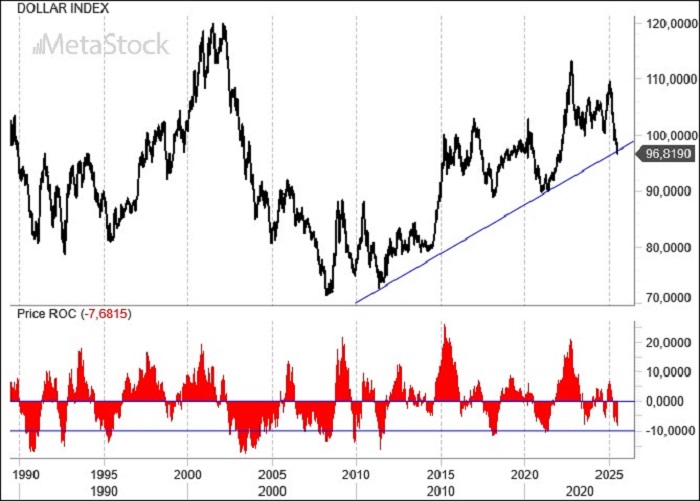- The tariff war has now shifted to America’s political and economic institutions, with the House approving the new budget and tensions escalating between Trump and Powell over the direction of monetary policy.
- In Europe, concern is growing over the euro’s recent strength, which may help ease inflation but risks stalling the already fragile economic recovery.
- EUR/USD remains near its highs, signaling a continued push to test the 1.20 level—identified by some ECB officials as a critical threshold worth watching.
Trump vs. Powell: A Week of Escalation
It was a politically and economically charged week in the United States, with employment data and ISM indices taking center stage.
The ISM manufacturing index painted a worrying picture of stagflation—stagnant growth coupled with rising prices. Employment slipped, and new orders dropped, reinforcing the narrative of a frustrated Trump pushing Fed Chair Powell toward resignation.
By contrast, the services ISM rebounded above the 50-point threshold. Unemployment declined, and wage pressures eased, rounding out a mixed but consequential week of economic signals.
Meanwhile, the House passed a budget framework projecting an additional $3.3 trillion in deficits over the next decade. The Fed responded with a stark warning: the current debt trajectory is unsustainable.
Adding fuel to the fire, a report from the Yale Budget Lab confirmed that the effective U.S. tariff rate now stands at 15.8%—its highest level since 1936. That alone explains Powell’s reluctance to adopt Trump’s economic narrative. And the Fed Chair didn’t mince words. Speaking from Sintra, Powell said, “Without tariffs, we would have already cut rates,” effectively tossing the ball back into Trump’s court.
The clock is now ticking toward July 9, the final deadline for extending the tariffs announced during Liberation Day. For countries like Japan and members of the EU, a resolution seems increasingly unlikely.
Across the Atlantic, the euro’s climb toward 1.20 has stirred debate inside the ECB. While this level helps Frankfurt suppress inflation and clears the way for further rate cuts, it also poses a threat. In a global landscape where competitors like China and Japan are aggressively devaluing their currencies, Europe’s export competitiveness is at risk.
Technical Analysis: EUR/USD Eyes 1.20 as Dollar Hits a Critical Juncture
Markets now anticipate a possible pause in the dollar’s decline, right as it nears a key uptrend line dating back to 2011. Also in play: the looming technical milestone of a 10% annual loss—often a minimum condition for a sentiment shift.
While this doesn’t guarantee a reversal, it’s a necessary step for the dollar to move into a more neutral, less directional phase. The latest futures data reveals a notably bearish sentiment, with speculative positions reinforcing this downbeat outlook.

Meanwhile, the long-term EUR/USD chart leaves little room for doubt. Since breaking above the 1.12 resistance level, the euro hasn’t looked back. It’s now approaching a price zone packed with significance.
The 1.20 level is more than just psychological—it’s home to multiple technical projections. And beyond that lies 1.25, the highs from 2018 and 2020, which now look like realistic targets for the months ahead.



Leave a Reply
You must be logged in to post a comment.